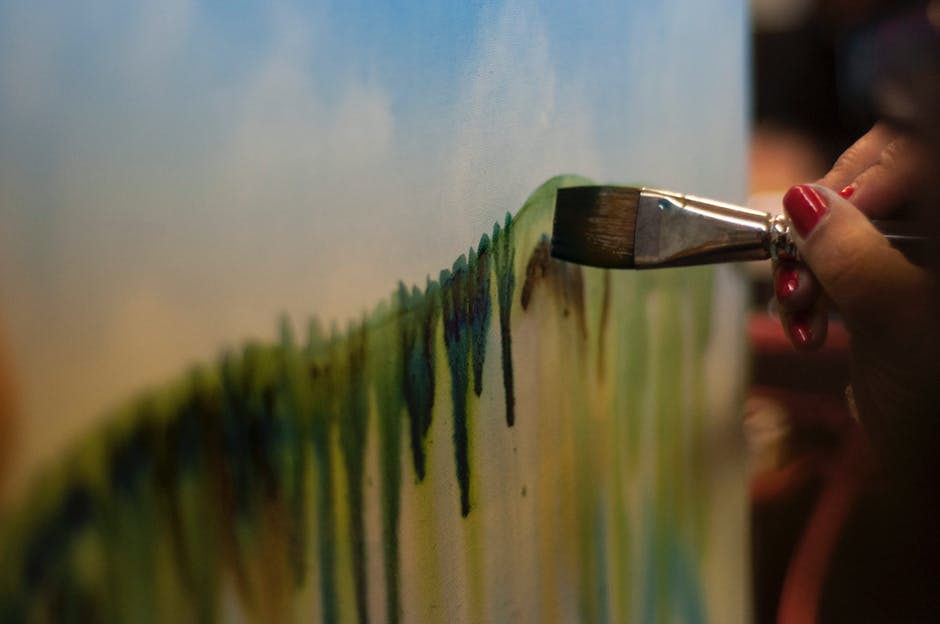My personal philosophy for developing a long-term, successful business and career as an artist unites three matters, some small business planning, a good deal of promotion, and above all, the capacity to make work that compels people.
Just like the professional business advisors, I want to discuss 10 easy steps I attempt to follow in my business pursuits and would highly recommend as solutions for your business:
1. Produce quality work
That is where it all begins and is the core essence of your business. Without great work, you can not expect to make an effective career or company. You have to be quite clear about exactly what it is you’re making, and what you’re making it for. Find your true passion and develop a niche in the market for your work. Doesn’t matter if its conventional art forms or digital art works.
2. Get to know your target market
As soon as you know your work and what you want to convey with your work, it is time to begin finding the proper market for this.
Much like every other company you want to learn as much as possible about who may want to purchase your artwork, locally, nationally, globally. You have to remain in contact with new advancements in the art business, the way the market in a variety of areas is impacting artwork buyers, distributors, and trends.
Here are some questions you ought to be asking yourself:
- How large is the potential market?
- Who’s buying artwork?
- Who’s making and selling artwork?
- Who’re your competitors and what type of costs and revenues do they make?
- Who is your intended audience?
- Where does your job fit in the wider art market?
- Which kind of spaces do you want your artwork to be seen in?
3. Learn about your marketplace:
I specify the “art market” as everywhere your piece can be seen by the public. These can be divided up into 3 different groups:
- Public exhibition spaces: Public art galleries, museums, libraries, spacious entry contests
- Industrial gallery spaces: These may vary from neighbourhood framing galleries around global galleries.
- Immediate access spaces: Everywhere people are able to come to you straight to understand your work, like your work studio, art fairs, your website
The more you understand your niche and your market, the better off you are going to be when making conclusions concerning producing and demonstrating your work. One example of an extremely specific product that may require customization of art would be designing a cigar box. Learning and acknowledging this target audience can help inspire you and your art ventures.

4. Grow a simple business strategy
It may be as straightforward as answering a couple of questions. After all, where would you wish to be in a few years down the track? Using a clear vision for your future can allow you to create goals and stay focused in the long term.
Write your answers to these questions:
- What should you expect to make from your job during the next 12 weeks?
- In what months would the cash come in?
- How are you going to handle the coming months if nothing is coming in?
- How much work are you going to want to sell to satisfy your revenue objectives?
- How much work are you going to will need to make so as to sell that sum?
5. Regularly examine and revise your business plan
Consider your business plan for a map, and also refer to it every now and then to be certain that you are still on track.
By way of instance, if you’d planned for a specific income coming from the initial 3 months of this year and it will not come in then you’ve got to discover a method of making up
that at the remaining 9 months. Set up an efficient business management system to record all accounting data and sales.
The simple fact you had a strategy in the first place means you could respond quickly when things do not look as though they are moving all well as you’d expected. At the end of each year I do a comprehensive overview of my business strategy, including my yearly cash flow projections–and use it to help make another year’s strategy. If you truly struggle with business planning or need some guidance, seek a professional business coach in Melbourne to assist you in getting started and to learn about the world of business. Another great and affordable way to learn is group business coaching since there are other similar business owners going through the same thing as you to learn from.
6. Create devotees by creating opportunities
Sooner or later, you are going to need clients, and you also create fans by creating as many chances as possible for people to observe your work. Obviously, admirers come in many sizes and shapes:
- Admirers: These are individuals who only enjoy your work, however, may never be in a position to purchase any. But nevertheless, they are important advocates for you.
- Art community lovers: Here are individuals in a position to help advance your career for example media, curators, important collectors, other artists and community groups. A group as specific, but known as a strong minority community of cigar lovers, could see a demand for your art in customizing a cigar humidor for birthdays or Father’s Day.
- Prospective clients: All these start off as admirers, but at any stage will invest into your own work. It might be in 6 months time, it might be two decades, but they’ve dedicated in their minds to purchasing your job at a certain stage later on.
- Real clients: Obviously, clients are only those who create this kind of relationship with your job they’re eager to invest in it. From the art world, they are called collectors.
Regardless of which kind of enthusiast someone is, they all have to begin at precisely the exact same place–viewing your work through the chances you’ve created. Introduce integrated asset management and invest in technologies that let customers pay by credit card on the spot such as Square Credit Card Reader.
Should you ever stop producing those chances, your organization, your livelihood will just die away. Establishing new, continuing opportunities might be the single most crucial thing you can do.

7. Make it effortless for the fans to “connect” with you.
If a person sees your job for the very first time because of one of the numerous opportunities you’ve created and determines they love what they see, then there’s a fantastic likelihood they’ll be interested in viewing more.
Now, that means using an engaging, professional website which individuals can see at their leisure time. Ideally, this really is the own site which provides a rich and fulfilling experience to the viewer. Social networking websites like Facebook and Twitter may be helpful areas to demonstrate your work but they don’t provide the same expert expertise to the viewer.
Each one the chances you produce up to this stage have one simple goal — to induce visitors to your site. I didn’t always think this way. I might also get a fantastic sense of the overall response to my art by speaking to my galleries or fulfilling prospective clients myself in the art fairs. However, what I was not measuring was that the range of individuals who visited my site.
That changed when I set up Google Analytics. At the time I started seeing that I had a constant flow of daily visits coming out of Ireland and globally, and I had been averaging 10 visits each day, with roughly 2500 visits in the last year.
This changed my whole method of considering my site and from then on I started to research ways of making it more private, more engaging, more and much more rewarding to the viewer.
8. Wait for “relations” to become clients
In my experience, if you’re able to get people to truly connect with your job, make them “hooked”, at some stage, they’re extremely likely to spend on you. The challenge is to produce something that somebody just cannot walk away from!
9. Nurture your clients
Your clients, your customers, your collectors who invest in your artwork and your career would be the most valuable people you encounter.
Place your customers, not the galleries, not the press, not the art community and let them know they’re the top priority. Just like all companies your present clients are where the majority of your new revenue will come from.
Whenever possible, provide special discounts, personal previews of forthcoming shows, studio visits, etc.. Keep your customers updated on your successes and plans.
10. Return to step 1 and repeat all of 10 measures again.
Being a professional artist is a never-ending cycle.
Consistently create decent work, always examine your marketplace and market to observe where you are interested in being at the forthcoming weeks, then write a business program which will enable you to fulfill your targets for the season, rather than quit earning opportunities which will bring folks to realize your work.
Finally, the opportunities you produce will turn into relations, then to sales, then into repeat clients. It is not always straightforward or easy, but it works!
